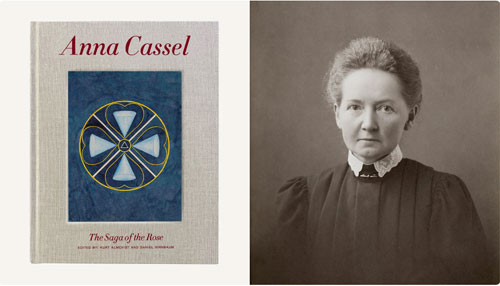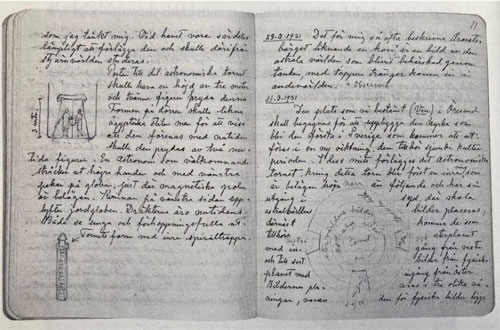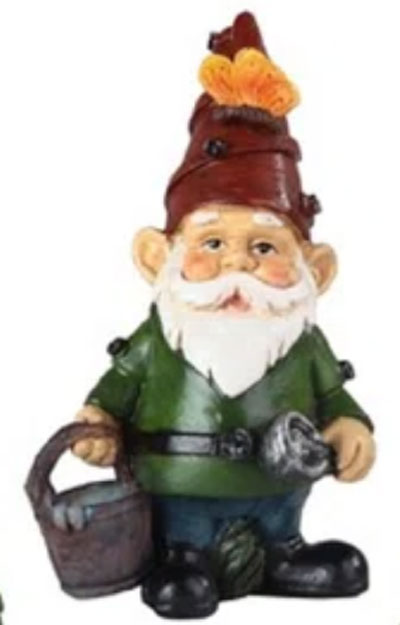|
Lissa writes:
Although Hilma af
Klint has been
revealed to be a
spiritualist far
more than an
abstract painter,
the internet is
still rife with
misinformed claims
that she is fighting
for her rightful
place vis-à-vis
Kandinsky. Online
posts of this ilk
can be found raging
across social media:
"… [I]t's
official! A woman
painted the first
abstract
expressionist
painting years
before Kandinsky
claimed that title.
She paints for the
future and she
predicts it, and she
is… finally
celebrated."
In fact, despite the
efforts of the arts
industry,
juxtaposing the two
of them doesn't say
much: af Klint
wasn't the
painter-poet-teacher-author-critic
or cornerstone of
the Bauhaus that
Kandinsky was; by
the same token,
Kandinsky did not
channel spirits or
interpret esoteric
messages from the
beyond or accept
missions from
supernatural beings
as af Klint did.
Truly, Hilma af
Klint and Wassily
Kandinsky were like
apples and oranges.

Cover of the new book on Anna Cassel, and a photograph of her.
Keeping the af Klint story alive, now the family of her low-profile
painter cohort, Anna Cassel—who even gave Hilma important
financial support at times—is fighting for her rightful place in the
prevailing af Klint narrative. Not quite the second fiddle we
thought, apparently. Kurt Almqvist, scholar and champion of af
Klint's reputation as a pioneering abstractionist, has shifted his
emphasis since finding "sixty of Anna Cassel's notebooks from the
years 1896-1921 in Järna." Daniel Birnbaum, Almqvist's co-editor
on Anna Cassel: The Saga of the Rose (2023), has said:
This was an important discovery, as Cassel describes events
that Hilma af Klint writes about in her notebooks, but from a
different perspective. Af Klint's accounts should sometimes be
taken with a grain of salt. Late in life, she rewrote her story to
fit the worldview she believed in at the time. In a way, she was
staging herself for posterity and clearly setting the record
straight. Cassel's version will certainly modify the picture
a bit.
Last year, on social media, a relative of Anna Cassel's made
comments to friends that testify to the effort it has taken to bring
Anna to the fore, with paintings, notebooks, and narrative of her
own. Her relative wrote (in Swedish): "It's been a long struggle.
Actually, it [my claims? ed.] could have been completely crazy. As
if I had said that Rembrandt actually had a brother, i.e. Bengt
Rembrandt, who did everything. I'm grateful that my friends
believed in me."
And so goes the sorry trajectory of af Klint's surprising visibility.
*
Editorial note: In this second part of Part 2, Jelena gives an
overview of the major exhibitions of Hilma af Klint's paintings
and the critical responses to them. As a bonus, she shares her
short piece satirizing both af Klint and the exhibitors!
You will find Part 1 here.
*
Jelena writes:
At the huge show "On the Spiritual in Art" (1985/6 in Los Angeles,
Chicago and the Hague) I encountered, among lots of very
different artists, 31 works by Kandinsky, and just as many by the
yet unknown Hilma af Klint. Among them, the strangest tiny
pencil drawings with precise descriptions around them, one of
them specifying that it helped with constipation--note that this
one was not included in the catalog--and thus, we can say that af
Klint achieved abstraction… naturally.

Temple designed with observatory of 1931,
notebook Stiftelsen af Klints Verk, HaK 1047.
There were also all sorts of diagrams, charts, etc. among her
paintings. I asked the show's organizer, Maurice Tuchman, why
he had included her. "I selected those abstractionists who
accompanied their art with a theory." True, Hilma accompanied
her drawings and paintings with endless theories. Hilma's
writings were important to her because they contained her
messages for mankind. This is why she wrote so much, often even
covering the whole reverse of her paintings with text. Would she
have agreed to show her artwork without her explanations? No
!—without them, all we see is her decorative work. But the many
explanatory writings Tuchman added to the show were not well
received.
Hilton Kramer, Chief Art Critic for The New York Times,wrote a
negative review of this "On the Spiritual in Art" show. In 2013
Hilma's great-grandnephew, Erik af Klint, gave his permission for
a very large, comprehensive solo exhibition to be organized in
Stockholm, Berlin and Malaga, accompanied by a very
informative, not exaggeratedly positive catalog with hundreds of
large illustrations. This was the beginning of Hilma's celebrity.
But now, when I ask art historians, experts, and artists what they
remember of the show? Hardly anything, no deep impression, or
a negative one. The next solo show, at the Guggenheim in 2018/19
, was also a huge success, with 600,000 visitors.
It's no wonder that the art critics hesitated to embarrass the
enthusiastic ladies who organized these blockbuster events,
probably also trying to avoid the ensuing shit-storm. It also takes
very little time to write a "review" when it just summarizes and
slightly varies what the catalog text has already said. In any case,
most reviews can be called positive, even going so far as to say
that, having seen af Klint's work, "… now art history has to be
rewritten"! But I also heard from several art professors that, after
visiting these shows with their students, they amused themselves
by giving them the unsolvable question for homework: "Find the
aspects of af Klint's works that are art."
The show at the Tate, London, confronted af Klint with Mondrian,
the former an Anthroposophist, the latter a Theosophist—and
with nothing else in common. Luckily their works were hung far
enough apart. Again one finds rather positive reviews, except
when comparing their botanical studies: " ... with Mondrian
taking a looser, painterly approach, where af Klint is subtly poetic,
but more empirical and diagrammatic." And ending "I remain
unmoved by her spiritual questionings and lexicon of forms" (Ben
Luke, The Standard, 18 April 2023). The same day Jonathan
Jones wrote that he finds af Klint's flower drawings to be "dry,
pedantic," but Mondrian's "captivating reveries." "Putting her
next to one of the very greatest modernists does her no favours."
(The Guardian)
So what should one think about putting Hilma af Klint next to
Kandinsky? What a risk! Not only art experts, but other generally
cultured visitors judged that this comparison means the end of
Hilma af Klint as an artist. But perhaps this is the opinion only of
those "with eyes"—those eyes which Kandinsky, Albers, and
actually all serious artists, wished for not only their students but
everyone to develop. Indeed, eyes to see and a sense for quality,
are becoming rare.
*
Editorial note: My favorite thing about this next piece is that,
while writing his letter poking fun at af Klint, the sychophantic
Garden Gnome manages strategically to propose not only a show
for his kind, but also a place for himself in history.

Spiridon Curlybearded
Association of Garden Gnome Craftsmen
Esteemed museum directors,
Fame be with you and the blessed medium Hilma af Klint for
extending the limits of art into the highest esoteric spheres of
occultism. Her spiritist sessions and her happy obedience to the
voices of the celestial male spirits Amaliel, Gidro, Gregor and
Ananda, have propelled her to superstardom. Unlike Kandinsky,
who had to live from the sale of his paintings, she kept her work
to herself and demanded that a Temple be built to it. And that
unrealized shrine was to be erected in Sweden, the land of our
cousins, the Trolls !
But you neglected to include Hilma's elaborately detailed healing
system: dozens of small drawings symbolizing each disease, from
bronchitis to constipation. By concentrating on these doodles,
humankind will forever be freed from the need to consult a
homeo—or psycho—path!
Your next exhibition should logically be dedicated to the grand
masters of gnome craftmanship. Only then will you finally resolve
the eternal mystery of the first abstract painting: not Kandinsky,
not Hilma—no, I, Spiridon Curlybeard, anticipated abstraction as
early as 1905 (cf. Malevich) in my pointy hat!!!
Awaiting your favorable response, I remain your very devoted
friend,
Spiridon Curlybear
*
Jelena's concluding thought
: Art historically, the new mess
makes no difference! All this is applied, descriptive, decorative =
not art, and will be forgotten by the next generation.
*
|